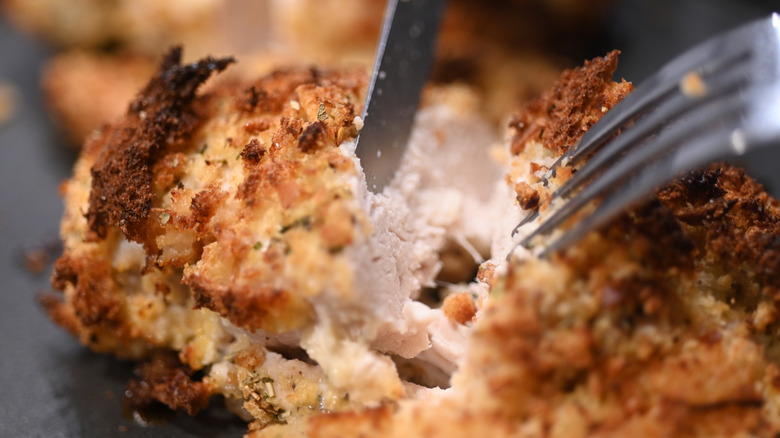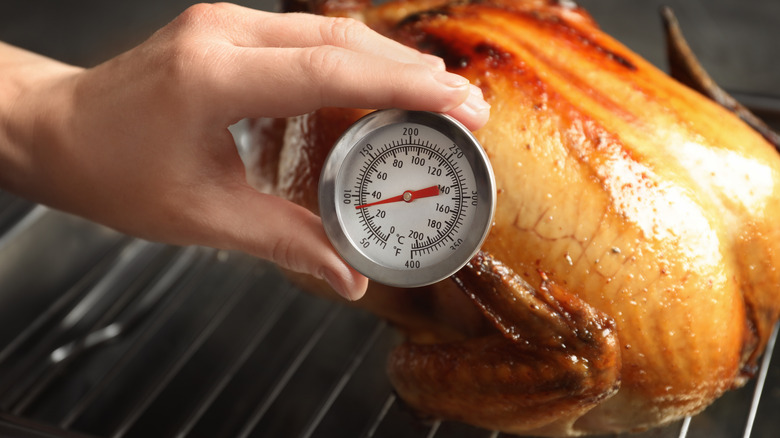Is The Juice Test A Reliable Way To Tell If A Chicken Is Done?
For a protein as common as chicken, you'd think that preparing this poultry option would be a walk in the park for most home cooks. According to the National Chicken Council, home cooks probably whip up some kind of chicken dish at home at least once a week. But cooking chicken can be surprisingly tricky, laden with pitfalls such as moving the chicken around the pan when you're sautéing it, which prevents the meat from acquiring a tasty sear; cranking up the heat too high when you're grilling it, which can lead to an overcooked result; or stripping the skin off before cooking, which can leave chicken dry.
Even the most experienced cooks among us seem to struggle with striking the right balance when it comes to chicken's doneness, either erring on the side of keeping the bird moist and inadvertently serving undercooked chicken or trying too hard to eradicate foodborne bacteria and ending up with parched, overcooked chicken. Part of the problem can be that it's just not that easy to actually tell if chicken is done or not: Many of us rely on cutting into the cooked chicken a little bit to see if the juices run clear or are still bloody, but is this really a reliable method?
To check if chicken is done, it's best to rely on a thermometer
If you've been active in the kitchen for a while, it's a safe bet to say that you've heard of — and likely used — the "clear juices" method to determine whether chicken is fully cooked. According to Waitrose, this typically entails making a small cut into the thickest part of a cooked piece of chicken and checking to see that the juices that run out are clear. For example, pink juices would indicate that the meat would need more cook time.
This is a convenient way to check chicken for doneness, as it doesn't require any special equipment. But Cook's Illustrated put this old-school method to the test and found that sometimes the juices from a cooked whole chicken's breast and thigh both ran clear when the meat was undercooked according to a thermometer. On other occasions, the opposite occurred: An overcooked bird's juices were still pink. This is due to the fact that myoglobin, a molecule present in chicken, does lose its color as it gets heated, but the temperature at which it loses its color varies. Better safe than sorry, in this case: The most foolproof way to ensure chicken is fully cooked is to reach for a thermometer. A chicken breast is cooked at 160 degrees F, and dark meat at 175 degrees F.

